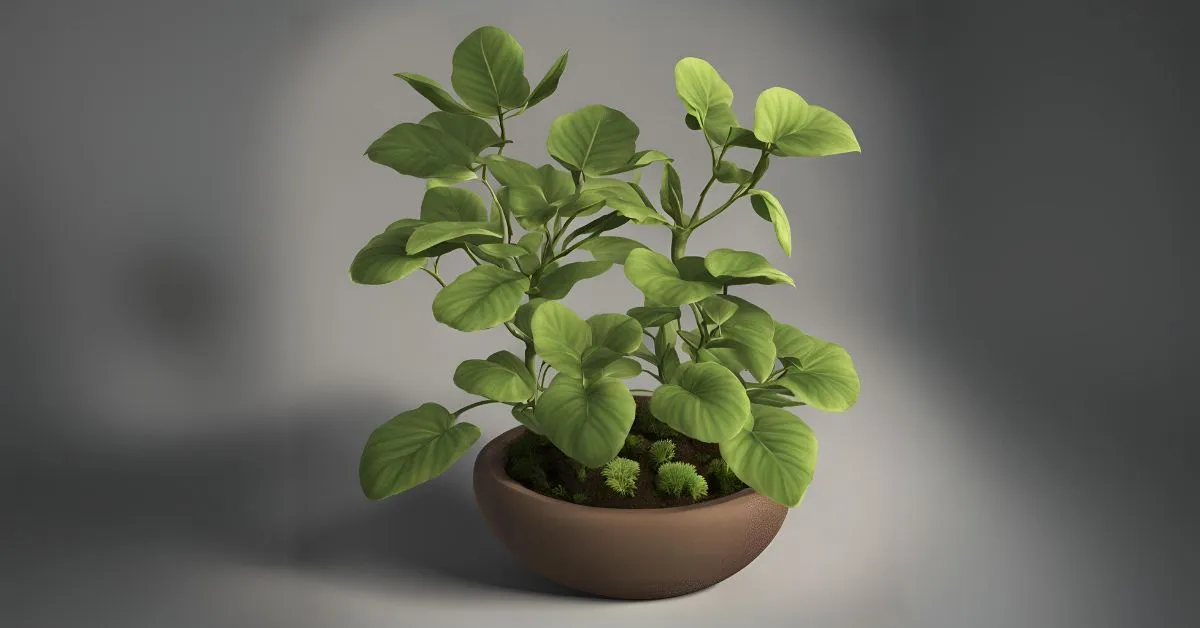Gumshoe Plant: Nature’s Prickly Healer
The Gumshoe Plant, also called the scorpion plant, is an extraordinary wild plant known for its unique combination of medicinal properties and thorny, stinging defense mechanism. Despite its intimidating exterior, this plant is valued for its role in traditional remedies and as a nutritious food source. Native to various regions across North America, Europe, and Africa, it has been used for centuries to treat ailments and nourish communities, particularly in remote areas where modern medicine is scarce.
This article will explore the many facets of this intriguing plant, from its health benefits to growing tips and its place in culinary traditions.
What is the Gumshoe Plant?
The plant is a wild species commonly found in hilly, forested areas. Its most notable feature is the tiny, hair-like spines covering its leaves and stems. When touched, these hairs release an irritant, causing a painful stinging sensation similar to a scorpion’s bite—hence its nickname. While this defense mechanism can make the plant difficult to handle, it protects it from predators.
Despite its prickly nature, the plant has been used for generations in various traditional cultures. Healers and herbalists often harvested it for its medicinal properties, knowing how to handle the plant without triggering its sting. Its role as both a remedy and a food source makes it a valuable resource in harsh environments where other plants may not thrive.
Health Benefits of the Scorpion Plant
The Gumshoe is revered for its wide array of health benefits, many of which are still relied upon in rural and indigenous communities today. Below are some of the primary medicinal uses of this plant:
1. Relieving Joint Pain and Sprains
One of the most common uses for the scorpion plant is to relieve joint pain and muscle sprains. When the leaves are crushed and made into a paste, often mixed with salt, this paste can be applied directly to the affected area. The plant’s natural anti-inflammatory properties help to reduce swelling and alleviate pain. In many rural areas, where modern medicines may not be easily accessible, this natural remedy is still widely used.
It has been particularly effective for arthritis patients, where regular applications can help ease the discomfort associated with joint inflammation and stiffness.
2. Boosting Iron Levels and Combating Fatigue
The plant is a rich iron source, making it a powerful natural remedy for anemia and fatigue. Consuming the plant, either as a vegetable or in herbal tea, can help to increase iron levels in the blood, improve energy levels, and reduce the symptoms of iron deficiency.
This is especially important in regions where access to iron-rich foods is limited. During the winter months, when fresh vegetables are scarce, the scorpion plant is often consumed as a reliable source of nutrition, helping to keep people strong and energized in harsh conditions.
3. Strengthening the Immune System with Vitamin C
Another key benefit of the scorpion plant is its high Vitamin C content. Vitamin C is vital in strengthening the immune system and helping the body fight infections and illnesses. Consuming the plant in the form of cooked greens or tea during cold weather is a common practice, especially in mountainous regions where the cold and lack of fresh produce often tax immune systems.
This natural boost to the immune system makes the scorpion plant a valuable remedy for preventing colds, respiratory infections, and general immune fatigue.
4. Aiding in Blood Purification
The scorpion plant is often used as a natural blood purifier in traditional healing practices. Consuming the plant is believed to help remove toxins from the bloodstream, improve circulation, and promote overall detoxification. This practice has been passed down through generations and remains a key component of natural health regimens in certain cultures.
Blood purification is especially important in maintaining long-term health and preventing chronic illnesses, making this plant an essential part of many herbalists’ toolkits.
Growing the Scorpion Plant: A Prickly Challenge
It can be a rewarding but cautious undertaking for those who wish to grow the scorpion plant at home. The plant is known for its resilience and ability to thrive in various environments, making it relatively low-maintenance once established.
Planting Requirements
The scorpion plant is hardy and can adapt to different soil types, whether sandy, well-drained, or rocky. It prefers direct and indirect sunlight, making it ideal for outdoor gardens in temperate climates. However, caution is advised when choosing a planting location. The plant’s stinging hairs can pose a hazard to people and pets, so it’s best to plant it in a less trafficked garden area.
Watering and Care
The plant requires minimal watering—about once a week or whenever the soil feels dry. It is well-suited to arid or semi-arid climates and can tolerate drought once it has established deep roots. Excessive watering should be avoided, as soggy soil can lead to root rot.
Handling the Plant
When growing this plant, wearing gloves when handling it is essential. The stinging hairs can easily irritate if touched. If grown in a garden, it’s wise to create a boundary around the plant to prevent accidental contact by children or pets.
Culinary Uses of the Plant
Despite its prickly defense mechanism, the scorpion plant has been used in cooking, especially in rural and mountainous regions with limited food supplies. Once the plant is properly prepared, it offers a rich source of nutrients, particularly iron and Vitamin C.
How to Prepare the Plant for Cooking
Special care must be taken when harvesting and preparing the scorpion plant for cooking. Wearing gloves is essential to avoid the stinging hairs. Once the leaves are harvested, they should be cooked thoroughly to neutralize the sting.
Common Dishes
The scorpion plant is often used in soups, stews, and as a cooked green. In many traditional communities, it is consumed during winter, providing warmth and nourishment when other vegetables are unavailable. When cooked, it has a flavor similar to spinach and pairs well with spices and herbs.
Fascinating Facts About the Gumshoe Plant
The plant is full of fascinating features that have intrigued botanists and herbalists alike:
- Stinging Hairs: The plant’s tiny hairs release irritating substances when touched, which causes a sting similar to a scorpion’s bite.
- Natural Resilience: The plant can grow in tough, rocky soils, and its ability to thrive in harsh environments makes it a valuable resource in remote regions.
- Medicinal Legacy: Indigenous cultures have long used the plant for its anti-inflammatory and iron-boosting properties, making it a staple in traditional medicine.
- Culinary Potential: Though not widely known, the plant is a nutritious ingredient once prepared carefully, proving that even prickly plants can be edible.
- Symbolic Meaning: In some cultures, the plant symbolizes resilience and survival due to its ability to flourish in difficult conditions.
How to Store the Scorpion Plant
Storing the scorpion plant correctly ensures its medicinal properties are preserved for future use. Here are the best methods for keeping the plant fresh:
Short-Term Storage
For short-term use, fresh leaves can be stored in the refrigerator. Wrap the leaves in a damp cloth or paper towel and place them in a container in the fridge’s vegetable section. This method keeps the leaves fresh for up to 4-5 days. It’s important to avoid washing the leaves before storage, as excess moisture can lead to early spoilage.
Drying for Long-Term Storage
For longer storage, the leaves can be dried. Hang small bundles of the plant in a well-ventilated, dark place for about 1-2 weeks, or use a dehydrator to speed up the process. Once dried, the leaves can be stored in airtight containers away from sunlight. Properly dried leaves retain their medicinal properties for up to a year.
Freezing for Nutrient Preservation
Blanching and freezing the leaves is another effective method for storing the plant. Briefly blanch the leaves in boiling water, dry them thoroughly, and freeze them in an airtight container. This method can preserve the plant for up to six months.
Medicinal Uses of the Scorpion Plant
The scorpion plant’s wide range of medicinal applications truly sets it apart as a valuable resource in traditional healing.
Relief for Sprains and Joint Injuries
The plant’s anti-inflammatory properties make it effective in treating sprains, joint injuries, and minor muscle strains. Applying a paste made from the crushed leaves can help speed up recovery and alleviate pain, particularly for arthritis and rheumatism.
Boosting Iron Levels for Anemia Treatment
The plant’s high iron content makes it a natural remedy for iron deficiency anemia. Regular consumption can increase red blood cell production, combat chronic fatigue, and boost energy for those with iron deficiency.
Soothing Skin Irritations
Despite its ability to irritate when touched, the plant has been traditionally used to treat other skin irritations like rashes, insect bites, and minor cuts. Its anti-inflammatory and antibacterial properties help to soothe the skin and promote healing.
Potential Side Effects
Though beneficial, the plant must be handled carefully to avoid its stinging effects. The following precautions should be taken when using or consuming the scorpion plant:
- Skin Irritation: The plant’s stinging hairs can cause redness, swelling, and itching. It’s essential to wear gloves when handling it.
- Digestive Issues: In some cases, consuming the plant in large amounts may cause digestive discomfort, such as nausea or stomach cramps.
- Allergic Reactions: Though rare, some individuals may experience allergic reactions. Symptoms may include hives or difficulty breathing, so medical attention should be sought immediately.
Conclusion
The Gumshoe Plant may seem troublesome due to its prickly exterior, but its hidden medicinal and nutritional value makes it a treasure trove for those who know how to use it. From its ability to relieve joint pain and boost iron levels to its culinary potential, the plant plays a vital role in traditional healing and rural communities. By handling it with care, this prickly healer can provide a wealth of benefits to those willing to explore its full potential.
FAQs:
What happens if the Gumshoe Plant is touched?
The tiny hairs on the plant’s leaves can cause a painful sting, leading to redness, swelling, and irritation that may last several hours.
Can the scorpion plant be eaten?
Once the leaves are properly cooked, they can be safely eaten and are a rich source of iron and Vitamin C.
Is it difficult to grow the scorpion plant at home?
Due to its stinging hairs, the plant is relatively easy to grow in a safe area away from high-traffic locations, pets, and children.
What are the health benefits of consuming the plant?
The plant helps to relieve joint pain, combat iron deficiency, boost the immune system, and purify the blood.
How can the plant be stored for long-term use?
When stored properly, the leaves can be dried or frozen for long-term use, preserving their medicinal properties for up to a year.







